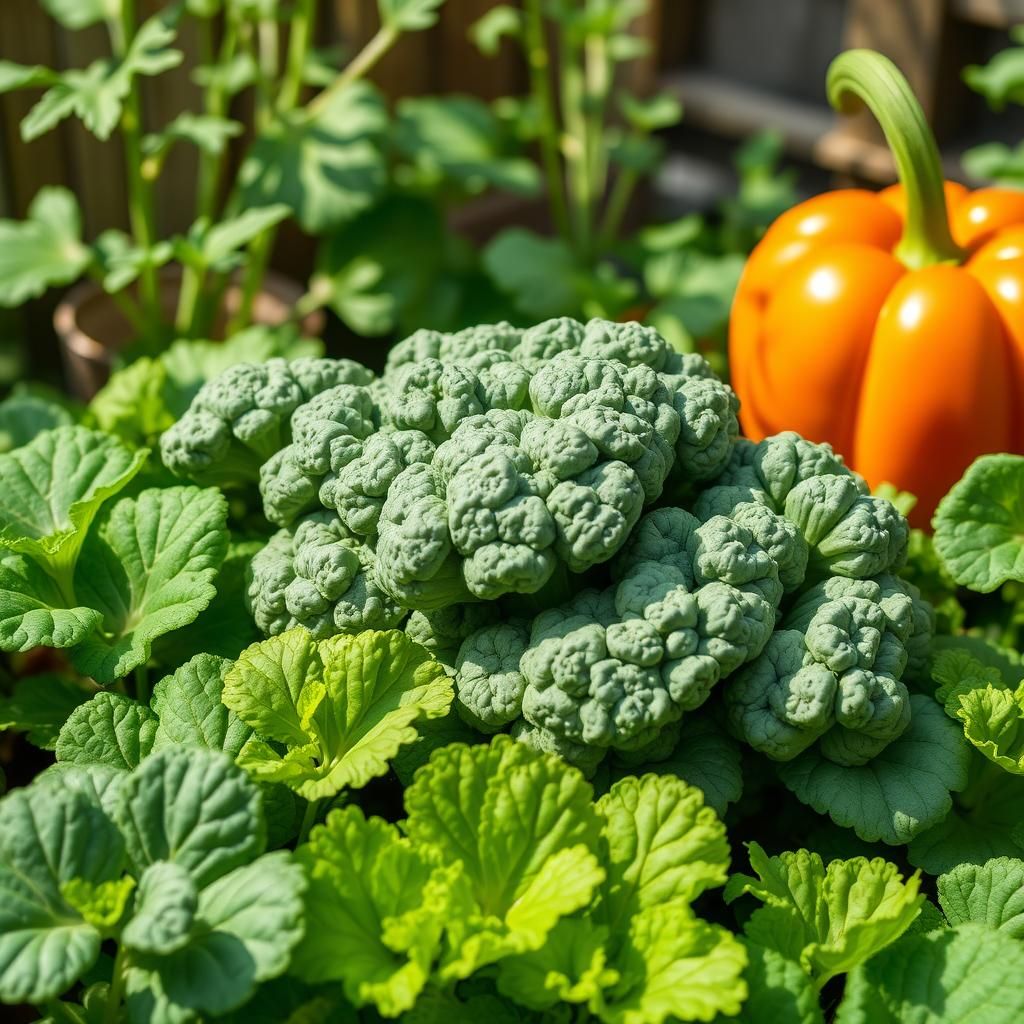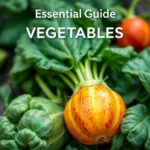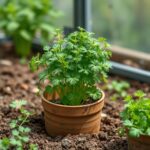Top 10 Veggies to Plant in the Summer for a Thriving Garden

As the warm sun graces our gardens during the summer months, it's the perfect time to cultivate a thriving vegetable patch. Knowing which vegetables to plant can make all the difference in your gardening success. In this article, we'll explore the top 10 vegetables that flourish in the summer heat, offering not only delicious flavors but also abundant yields. From crunchy cucumbers to vibrant peppers, these vegetables are not only easy to grow but also packed with nutrients. Get ready to enhance your culinary creations and enjoy the fruits of your labor with our essential summer gardening guide!
Best Vegetables to Plant in the Summer
Planting vegetables in the summer can be incredibly rewarding, as the warm weather and longer daylight hours provide ideal growing conditions for a variety of crops. It’s the perfect time to sow seeds for heat-loving vegetables such as tomatoes, peppers, and cucumbers. These vegetables thrive when the soil temperature rises, and they are essential for a summer garden. In addition to these, quick-growing greens like spinach and arugula can also be sown during the hottest months, providing fresh produce for salads and dishes. By strategically selecting and timing your summer crops, you can enjoy a bountiful harvest well into the fall.
Tomatoes
Tomatoes are a summer garden staple due to their versatility and delicious flavor. They thrive in warm soil and require full sun for best results. To grow tomatoes, select varieties that suit your climate, such as indeterminate types that grow continuously, or determinate ones that produce fruits all at once. Regular watering and fertilizing will keep your plants healthy, and staking or using cages can help keep them upright and improve airflow around the fruits, reducing the risk of diseases.
Peppers
Peppers, both sweet and hot varieties, flourish in the summer heat. They require similar growing conditions to tomatoes, needing abundant sunlight and well-drained soil. Start seeds indoors if your season is short, or sow them directly in the garden once the risk of frost has passed. Regular watering and a balanced fertilizer will support their growth. Harvesting peppers when they are still green can encourage more fruit production, while allowing them to ripen will enhance their sweetness.
Cucumbers
Cucumbers are another excellent choice for summer planting, as they grow rapidly and can be harvested within a few weeks. They prefer warm temperatures and well-drained, nutrient-rich soil. Plant them in mounds or hills to improve drainage and soil warmth. Providing a trellis for climbing varieties can save space in the garden and improve air circulation, which helps reduce the likelihood of fungal diseases. Regular watering and mulching will ensure your cucumbers stay hydrated and productive throughout the summer.
Spinach
Spinach is a fast-growing leafy green that can be sown in late spring or early summer. It prefers cooler weather, so planting it early in the summer is ideal before the heat sets in. Spinach thrives in well-drained soil enriched with compost or organic matter. It’s important to keep the soil consistently moist to produce tender, flavorful greens. Spinach can be harvested multiple times by cutting the outer leaves, allowing the inner leaves to continue growing for a continuous supply of fresh greens.
Arugula
Arugula, known for its peppery flavor, is an excellent vegetable to plant in the summer as it grows quickly and can be harvested in just a few weeks. It prefers cooler temperatures as well, making it ideal for spring or early summer sowing. Quick to bolt in heat, it’s best to harvest arugula young before the summer heat sets in and affects its flavor. Like spinach, arugula thrives in well-draining soil, and consistent moisture will promote robust growth.
| Vegetable | Sun Requirements | Days to Harvest |
|---|---|---|
| Tomatoes | Full Sun | 70-85 |
| Peppers | Full Sun | 60-90 |
| Cucumbers | Full Sun | 50-70 |
| Spinach | Partial Sun | 30-45 |
| Arugula | Partial Sun | 20-30 |
What is the best vegetable to plant in summer?
![]()

The best vegetable to plant in summer is tomatoes. Known for their versatility and popularity, tomatoes thrive in the warmth of summer and produce high yields. They require full sun, well-drained soil, and consistent watering to develop their rich flavor. Varieties such as cherry, beefsteak, and heirloom offer diverse choices for gardeners, making them a favorite for both beginners and experienced growers.
Benefits of Growing Tomatoes
Tomatoes provide numerous advantages for gardeners and cooks alike. Some of the main benefits include:
- Nutritional Value: Tomatoes are rich in vitamins C and K, potassium, and folate.
- Versatility: They can be used in salads, sauces, soups, and more.
- High Yield: A single plant can produce a substantial amount of fruit throughout the growing season.
Choosing the Right Variety
Selecting the proper variety of tomatoes suitable for your climate can significantly affect your harvest. Consider the following:
- Certain Varieties: Some tomatoes, like cherry or grape, are smaller and quicker to mature.
- Indeterminate vs. Determinate: Indeterminate tomatoes grow continuously, while determinate varieties grow to a specific height and produce fruit all at once.
- Consider Climate: Some varieties are bred for cooler climates, while others flourish in hot conditions.
Soil and Spacing Requirements
Creating the right growing conditions is essential for healthy tomato plants. Pay attention to:
- Well-Drained Soil: Use a soil mix that drains well to prevent root rot.
- Fertilization: Regular feeding with a balanced fertilizer promotes growth and yields.
- Spacing: Provide adequate spacing (24-36 inches) to allow for air circulation and growth.
Pest and Disease Management
Pest and disease control is crucial for a successful tomato harvest. Here are strategies to consider:
- Regular Monitoring: Check plants frequently for signs of pests like aphids or whiteflies.
- Companion Planting: Planting basil or marigolds nearby can deter pests.
- Organic Treatments: Use neem oil or insecticidal soap to treat infestations safely.
Harvesting Techniques
Knowing when and how to harvest tomatoes can enhance their flavor and texture. Key points include:
- Ripeness Indicators: Look for color changes and slight softness to determine ripeness.
- Gentle Handling: Use scissors or pruning shears to cut the fruit from the vine.
- Storage Tips: Store harvested tomatoes at room temperature for the best flavor.
What vegetable grows well in hot weather?

One of the best vegetables that thrives in hot weather is tomato. This popular fruit is not only versatile in cooking but also known for its ability to withstand high temperatures. Tomatoes prefer temperatures between 70°F and 85°F (21°C to 29°C) during the day and can tolerate even higher temperatures, making them ideal for warm climates. They require ample sunlight and consistent watering, especially during the heat of summer to prevent the fruits from cracking. Additionally, tomatoes benefit from well-drained soil enriched with organic matter.
See also:
Varieties of Heat-Tolerant Vegetables
Many vegetables perform well in hot weather. Here are a few varieties known for their heat tolerance:
- Okra: This vegetable thrives in the heat and is often used in Southern cooking.
- Eggplant: Known for its ability to grow in high temperatures, eggplants produce quickly in warm weather.
- Peppers: Both sweet and hot peppers love the heat and will produce abundant crops in sunny gardens.
Watering Strategies for Hot Weather
Proper watering is crucial for growing vegetables in hot weather. Here are some effective strategies:
- Deep watering: Water deeply and less frequently, encouraging roots to grow deeper into the soil.
- Morning watering: Watering in the early morning reduces evaporation and allows plants to absorb moisture before the heat of the day.
- Mulching: Applying mulch around the plants helps retain soil moisture and regulates temperature.
Soil Preparation for Hot Weather Gardening
Soil preparation is essential for successful gardening in warmer climates. Consider these tips:
- Organic matter: Incorporating compost or well-rotted manure improves soil texture and moisture retention.
- pH levels: Testing soil pH helps ensure that the conditions are favorable for vegetable growth.
- Drainage: Ensuring proper drainage prevents root rot and other issues that can arise from excess moisture.
Common Pests and Diseases in Hot Weather
Hot weather can attract certain pests and diseases. Be on the lookout for:
- Aphids: These small insects can proliferate quickly in warm weather and damage tender plants.
- Whiteflies: Known for spreading diseases, whiteflies can become a significant problem during hot spells.
- Powdery mildew: Warm weather and humidity can lead to this fungal disease on leaves, causing them to deteriorate.
Harvesting Fruits and Vegetables in Hot Weather
Timing your harvest is key in hot weather. Here are some pointers:
- Optimal times: Harvesting during cooler parts of the day, such as early morning or late evening, helps maintain quality.
- Signs of ripeness: Learn the signs of maturity for different vegetables to ensure peak flavor and nutrition.
- Avoiding heat stress: Do not leave harvested produce in direct sunlight to prevent wilting and loss of freshness.
Questions from Our Readers
What are the best veggies to plant in the summer?
Summer is an ideal time to plant a variety of vegetables that thrive in warm weather. Some of the best options include tomatoes, peppers, cucumbers, and zucchini. These vegetables typically enjoy the heat and can bear fruit quickly, making them perfect for summer gardens.
When should I plant vegetables in the summer?
The optimal time to plant vegetables in the summer varies by region, but generally, you should aim to plant them after the last frost date, which often falls in late spring. To ensure the best growth, consider planting around mid to late June for most summer crops, as this is when soil temperatures are consistently warm.
How often should I water summer vegetable plants?
During the summer months, it's crucial to keep your vegetable plants adequately hydrated. Generally, you should water them infrequently but deeply, about once or twice a week, depending on the weather and soil conditions. Ensure that the soil remains consistently moist but avoid over-watering to prevent root rot.
See also:
Can I grow vegetables in containers during summer?
Yes, you can definitely grow vegetables in containers during the summer! Container gardening allows for flexibility and portability, making it easier to optimize sunlight exposure. Choose suitable vegetables such as lettuce, herbs, and radishes, which can thrive in smaller spaces and can benefit from the warm temperatures of the season.

If you want to read more articles like Top 10 Veggies to Plant in the Summer for a Thriving Garden, we recommend you check out our Seeds category.
Leave a Reply
Related Articles